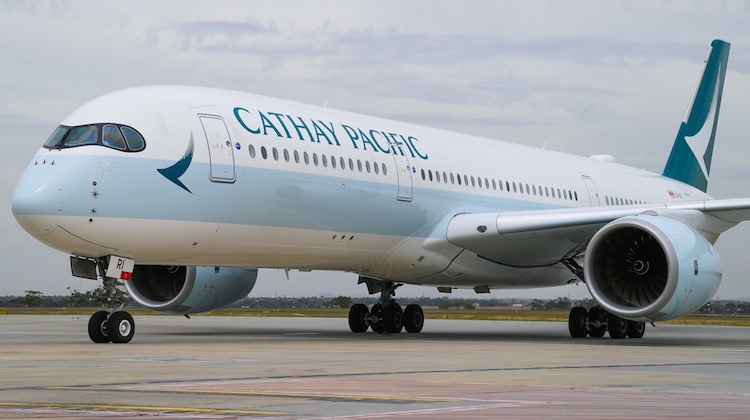
Aviation powerhouse Cathay Pacific Airways has slumped to just the third annual loss in its 70-year history as intense competition and overcapacity hit yields while economic jitters affected demand in crucial business markets.
Cathay reported a net loss of HK$575 million (A$98 million) for the 12 months to December 31 2016, slumping into the red from net profit of HK$6 billion (A$1 billion) in the prior corresponding period. It was the first annual loss since 2008.
Revenue declined 9.4 per cent to HK$92.8 billion (A$15.8 billion), Cathay said on Wednesday.
Cathay, and others, have battled the rapid international expansion of Chinese airlines and the ongoing rise of Middle East carriers offering long-haul to long-haul connections through their hubs, which have bitten into previously lucrative markets. And in Asia, low-cost carriers have won passengers happy to pay lower fares for a no-frills product on short- and medium-haul routes.
Further, the economic slowdown – both in China and elsewhere – had led to a significant reduction in premium corporate travel in business and first class, particularly on long-haul routes.
The company has sought to regain lost ground through an overhaul that included a reorganisation of the business, likely staff layoffs and other cost reduction efforts.
This included operational changes to improve the reliability of Cathay’s schedules and lift on-time performance. Replacing older Airbus A340-300s with newer more fuel-efficient aircraft such as the Airbus A350-900 would also help lower costs.
Cathay chairman John Slosar said the airline was targeting a reduction in unit costs excluding fuel over the next three years.
“We are starting on a three-year programme of corporate transformation with the intention of achieving returns above the cost of capital,” Slosar said in Cathay’s full-year results release.
“The goal is to become a more agile and competitive organisation in order to take advantage of changing market trends and customer preferences.
“The objective of the Cathay Pacific Group is to provide sustainable growth in shareholder value over the long term. We are confident of longer-term success. We celebrated our 70th anniversary in 2016 and our commitment to Hong Kong and its people remains unwavering.”
Cathay said passenger yields across its network fell 9.2 per cent to 54.1 HK cents, from 59.6 HK cents in the prior corresponding period. Yields are an industry measure of average airfares per passenger per kilometre.
The company reported an increase in passenger numbers on its south west Pacific and South African routes in calendar 2016.
However, it said yields were “adversely affected by the weakness of the Australian dollar and by overcapacity in the market”.
Further, transit traffic between mainland China and Australia – a key source of passengers for Cathay – was hurt by the availability of additional cheap nonstop flights.
Elsewhere, Cathay said a reduction in corporate travel affected premium class revenue in major markets such as London and New York.
“Corporate travel originating in Hong Kong was below expectations, particularly to London and New York,” Cathay said.
“The number of corporate travellers declined for the first time since 2009, when business was affected by the global financial crisis. The decline prompted us to sell premium class tickets on a promotional basis to leisure travellers.”
In terms of cargo, Cathay said strong competition, overcapacity and the suspension of Hong Kong fuel surcharges put significant pressure on yield.
And while lower fuel prices have boosted the bottom line, the benefit was offset by losses from Cathay’s fuel hedging program.
Slosar said market conditions were unlikely to get any easier in 2017.
“We expect the operating environment in 2017 to remain challenging,” Slosar said.
“Strong competition from other airlines and the adverse effect of the strength of the Hong Kong dollar are expected to continue to put pressure on yield. The cargo market got off to a good start, but overcapacity is expected to persist.”
The airline plans to increase capacity between four and five per cent in 2017.
(Read more about Cathay being “Between a rock and a hard place” in the March edition of Australian Aviation, on sale now.)










